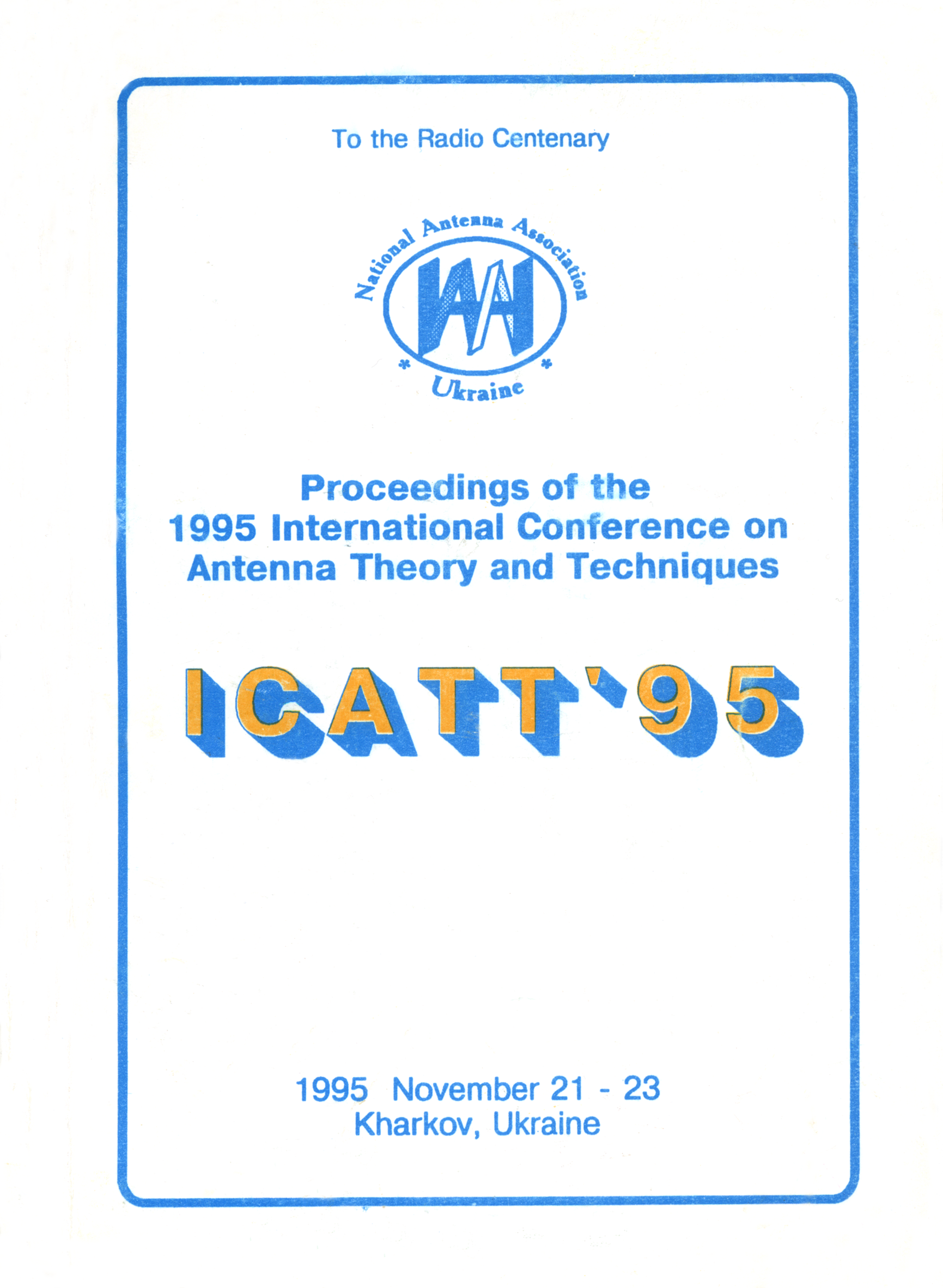New method of evaluating input impedances of on-board thin-wire antennas
DOI:
https://doi.org/10.1109/ICATT.1995.1234155Abstract
The paper presents a novel analysis method of input impedances of thin-wire antennas placed on the surface of metallic object. The method is based on using of Hilbert transform. In the core of the method, there lies the representation that the unknown total impedance of a thin-wire antenna on a metallic body is sought as a sum of input impedance of the same antenna placed on a metalic plane, and additional term ΔZ, which corresponds to the difference of the effect of actual body from that of the plane. The active part of the mentioned term, ΔR, is estimated by the method of Poynting’s vector, and the reactive one is estimated by the Hilbert transform method. The final formula used for the evaluation of the input impedance of thin-wire antenna on a metallic object is as follows
*
where ΔRΣ is the difference between the radiation resistances of the antenna on the object and on the plane, kd is the electrical length of antenna, ΔW is the difference between wave impedances of the antenna on the object and on the plane, Zip is the impedance of antenna on the plane.
The method has been verified experimentally by using a cylinder and a sphere as test objects. The experimental results has shown that the method accuracy is within the measurement errors of contemporary automatic measuring equipment. The limits for die method application have been established. When electrical radius of a cylinder is ka ≥ 3, the latter can be substituted by a plane. The same is valid for a sphere having electrical radius ka ≥ 4.
The method can be used for the objects of various shapes provided that the far zone field is known, and the solution to the Poisson equation in the presence of the object is available.

